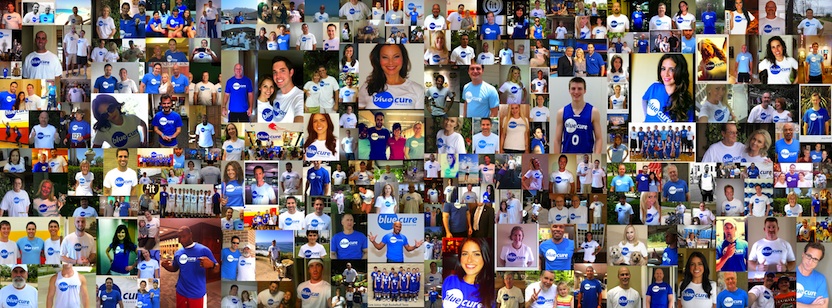
September is National Prostate Cancer Awareness Month, and blue is our symbolic color for prostate cancer awareness. This month is an opportunity to put a spotlight on this disease, give men hope, make a difference and save lives. But what does it mean to "raise awareness" of prostate cancer? What about prostate cancer needs to be communicated to men of all ages, of all backgrounds? And how can we use the symbolic Blue to truly stand for something that can make a difference and move people to action?
This September as I crisscross the country to raise awareness, I ask that you join me and share the message:
•That prostate cancer is not just an old man's cancer;
•That prostate cancer prevention begins when men are boys;
•That men of all ages must be empowered and educated on an "anticancer" approach through preventative dietary and lifestyle habits, as well as knowledgeable about annual screenings.
The symbolic blue thus will be given meaning and defined. But while such symbolism can be powerful, it can lose its power when the substance behind it isn't clearly defined and understood. I look to change that with others in the cancer community -- especially others in the prostate cancer community. Blue stands for knowledge, empowerment and action. Please join me in this blue crusade.
By an inadvertent test, I was diagnosed with prostate cancer at age 35 and, at the time, I didn't know anything about this dreadful disease that's the most commonly diagnosed "male cancer" in America. But neither do most men my age. After all, why would young men be bothered with learning about a disease perceived as an old man's cancer?
Well, I'm an example that prostate cancer is not an old man's cancer -- and that we need action, now.
Up to now, prostate cancer awareness campaigns in September haven't reached men in their 30s or younger with a proactive approach -- to commit to action, now.
We must change this -- now.
Most prostate cancer awareness campaigns focus on raising money for research or "awareness" on getting annual PSA screenings at 55 if you're white and 45 if you're African-American or have a family history of prostate cancer. But I had no family history of prostate cancer, or any cancer, yet I was diagnosed at age 35 -- when I would've had no reason to get screened.
So what's missing from awareness campaigns?
What's missing is prevention. What's missing is a mission to not get prostate cancer in the first place, or to do everything one can to reduce the risks. That message transcends all age groups and all ethnic backgrounds. It's a message of individual empowerment through education.
Without that message of prevention, prostate cancer numbers continue to rise, from 217,730 men diagnosed in 2010 to 240,890 men in 2011. And even more are expected this year.
The annual number of men diagnosed must go down, not up. Clearly, we have to start awareness at a much younger age.
What can blue awareness mean to a man in his 20s or 30s? What about a young man in high school or junior high?
I wrote recently that prostate cancer prevention begins when men are boys. I have spoken to young men in college, high school and junior high. You'd be surprised at how receptive younger men are to the message of adopting healthier dietary and lifestyle habits when spoken to honestly and given examples of what healthy eating and living look like.
They hear the message -- and heed the awareness -- that 90 percent of cancer is environment and lifestyle-related.
I know many great challenges confront us, but as these young men show, future "statistics" can be stopped now with awareness and prevention. Indeed, lives depend on it.
A blue awareness message encourages such a proactive "anticancer" approach: Know what's in your food, and become educated about foods that have hormones, antibiotics, pesticides, herbicides, fungicides or larvicides. Know what genetically modified foods signify. Know about your environment, know about the pollution in the air you breathe, know about the water you drink and the chemicals in the lotions and sprays you put on your body. Know about household contaminates.
Such knowledge is power. Become an empowered individual.
My good friend, Dr. Shalin Shah at MD Anderson Cancer Center, says, "You're never too young or too old to start lifestyle changes." But as I learned the hard way, preventative dietary and lifestyle habits must begin at an early age.
I want everyone to understand and embrace the significance of blue, the power of blue. I launched the Blue Cure prostate cancer non-profit to add a voice that reaches a younger generation as well as to encourage the adoption of healthier dietary and lifestyle habits among those already diagnosed with prostate cancer.
We need to do this together. I call on food companies, corporations, school districts, sports teams, celebrities, sports figures, entertainers and rank and file individuals to join our movement.
Let's go blue! Yet let's also know the intention and embrace the meaning behind it. We must be proactive in our health care. We must be empowered by education. In these ways, we can make a difference.
Go Blue!
